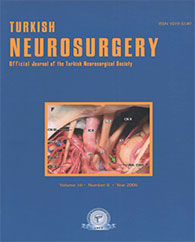METHODS: The patient was a 11-year-old girl who presented with recurrent back pain, urinary incontinence, and bilateral leg pain due to L5-S1 high-grade spondylolisthesis. The pre-and postoperative neurological status was evaluated and radiographic films were reviewed. RESULTS: She was treated by total L-5 laminectomy with foraminotomy and posterior fusion through the transvertebral approach. The lumbosacral dislocation was partially reducted. The percent slip and slip angle were measured pre- and postoperatively. The patient was doing well 16 months postoperatively with no further deterioration in neurological function and excellent fusion.
CONCLUSIONS: This procedure is technically easy and does not have the known risks of the surgical treatment of high-grade spondylolisthesis. The technique is a safe and effective single-stage procedure, and employs posterior instrumentation fundamentals as used by spinal surgeons. It is simpler to perform in high-grade slips than the other methods of lumbosacral stabilization.
Keywords : Spondylolisthesis, Child, Posterior fusion




